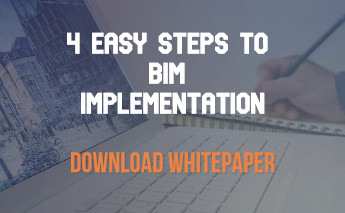|
Getting your Trinity Audio player ready...
|
The 2016 has witnessed to significant changes in the AEC industry of construction field and now we have moved forward a lot while looking back. Instead of fearing the software implementation costs and changing work environments, everybody started to think about more creative procedures. The corporate culture forces us to enquire common grounds for sharing and exchanging of knowledge, resource and information.
The WHYs, WHAT and HOWs type questions regarding the macro process of BIM implementation are almost answered. However, the WHATs and the HOWs related to data exploitation are still unanswered.
All clients and contracts in the UK find that collecting and distributing as-built data through a common way is a major issue that they face. Even though BIM philosophy promises the accessibility of the accurate as-built data, the construction industry is eager to know how exactly it becomes possible.
CoBuilder’s executive team in London held two separate events with largest contractors and manufacturers of UK to find out answer to such questions. They discussed how to solve their data challenges such as collecting and sharing data during construction and operation of assets.
“WHAT data- Manufacturer’s Digital data
The architect, contractor, client and the government wants common digital formats for data. This data solution can help all participants in the construction industry to avoid the copy-paste method while delivering information and thereby to get better process.
Most of the data that the manufacturers collect from directives, regulations, standards and market requirements is not structured in BIM formats, but in PDFs and Word Files or in their own databases. These data, which is named as the companies own system, it can be operated with the supply chain.
As this data is very important for contractors to build and manage an asset and therefore the supply chain wants to get it from the manufacturers in BIM compatible format. So, the institutions like Construction Product Association and BIM4M2 produces Product Data Templates (PDTs) that can share the data that the supply chain requires. Using this PDTs, the manufacturers can understand the type of data they have to share.
“How” do we collect and deliver the as built data?
coBuilder’s team of R&D specialists and data scientists, during the meeting with major UK contractors, dealt with the question of how to collect the as built data and how it can be transformed to the required data formats like Revit, IFC, ARCHICAD, COBie etc. coBuilder presented ProductXchange and demonstrated how it collects the as built data, extracts information from the manufacturers PDFs and how it is exported to COBie and to models like IFC/Revit.
Validation of the data was the final stage to be investigated, the as built data collected by ProductXchange from the supply chain is verified against the needs of the clients or architects at the stage of design. With this, the manufacturers can make sure that the data is accurate and can see the changes in product specification during construction.
Manufactures need the data in BIM formats to avoid depending on the PDFs, which is the only means of sharing information. The supply chain gets the required data in the required format, only by sharing the correct up-to-date data. So the data can be exported into COBie and deliver the accurate as built data. So the Facilities Managers are able to use this data to manage their assets effectively.



Leave a Reply